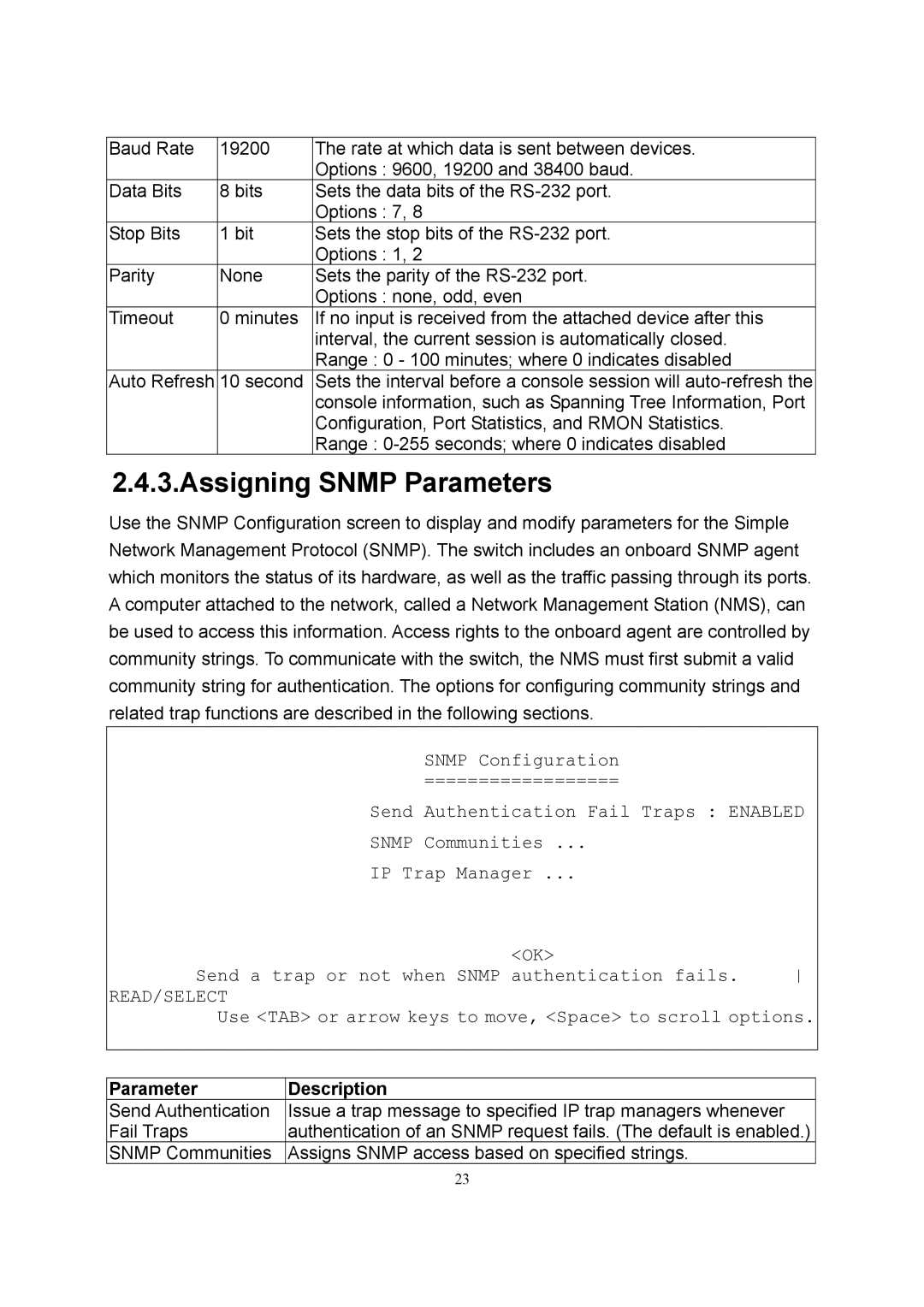
Baud Rate | 19200 | The rate at which data is sent between devices. |
|
| Options : 9600, 19200 and 38400 baud. |
Data Bits | 8 bits | Sets the data bits of the |
|
| Options : 7, 8 |
Stop Bits | 1 bit | Sets the stop bits of the |
|
| Options : 1, 2 |
Parity | None | Sets the parity of the |
|
| Options : none, odd, even |
Timeout | 0 minutes | If no input is received from the attached device after this |
|
| interval, the current session is automatically closed. |
|
| Range : 0 - 100 minutes; where 0 indicates disabled |
Auto Refresh | 10 second | Sets the interval before a console session will |
|
| console information, such as Spanning Tree Information, Port |
|
| Configuration, Port Statistics, and RMON Statistics. |
|
| Range : |
2.4.3.Assigning SNMP Parameters
Use the SNMP Configuration screen to display and modify parameters for the Simple Network Management Protocol (SNMP). The switch includes an onboard SNMP agent which monitors the status of its hardware, as well as the traffic passing through its ports. A computer attached to the network, called a Network Management Station (NMS), can be used to access this information. Access rights to the onboard agent are controlled by community strings. To communicate with the switch, the NMS must first submit a valid community string for authentication. The options for configuring community strings and related trap functions are described in the following sections.
SNMP Configuration
==================
Send Authentication Fail Traps : ENABLED
SNMP Communities ...
IP Trap Manager ...
<OK>
Send a trap or not when SNMP authentication fails.
READ/SELECT
Use <TAB> or arrow keys to move, <Space> to scroll options.
Parameter | Description |
Send Authentication | Issue a trap message to specified IP trap managers whenever |
Fail Traps | authentication of an SNMP request fails. (The default is enabled.) |
SNMP Communities | Assigns SNMP access based on specified strings. |
23
